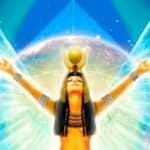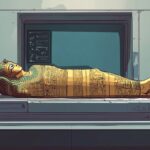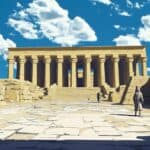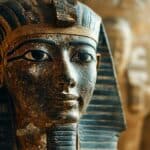Isis explained that mystery schools existed in ancient Egypt to teach lessons that facilitated spiritual ascension.
Channeling of the Blue Avians: An Introduction
The Blue Avians mention their presence in historical human civilizations, such as ancient Egypt.
Carroll adds that Kryon believes the Osirion site could be 10,000 years old. This is not officially recognized by the Egyptian government.
Details on the Tower of Babel, stating it took 43 years to build, with a base of 203 bricks, and a total height of 2,477 meters.
The Pyramid Texts, specifically Text 1717, describe the dead king’s journey to the afterlife, closely tied to Orion.
Secrets of the Great Pyramids of Giza (Part 2)
Erik suggests that the pyramids produced an electromagnetic-type power, with the potential to rejuvenate the human body if properly harnessed.
Secrets of the Great Pyramids of Giza (Part 1)
The pyramids emitted frequencies that allowed for connection with extraterrestrial sources. Only a select few among the Egyptians knew how to access this power.
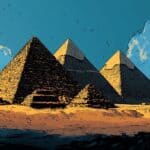
Decode the Secrets of the Pyramids
Robert and Aaron both share their belief that humanity is not imprisoned by external forces but by its own consciousness.

Sarcophagi of Pharaohs
In 1842, explorer John Perring suggested that the large granite box beneath the pyramid had never been used as a tomb.
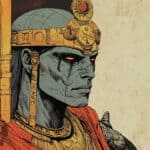
Osiris, born in Atlantis over 35,000 years ago
A direct descendant of those of higher thought who maintained their concepts in the Motherland of Man.

Ancient Egypt
The Great Sphinx was constructed prior to the pyramids and originally had a feline face, representing the influence of Lyra.

Hathor
Hathor was an ancient Egyptian goddess associated with several aspects of life, including love, beauty, music, fertility, and motherhood.
In May 2017, researchers from the Max Planck Institute for the Science of Human History, led by Johannes Krause, made a groundbreaking discovery.

The Exodus to Egypt
From the Canary Islands, they embarked on different paths to reach the Nile, which was their ultimate goal.

Hept-Supht
The Atlantean Hept-Supht played a crucial role during the later years of the civilization, particularly as it began to decline.
Abydos, a major religious center dedicated to Osiris, may hold clues to a story predating Egyptian civilization by thousands of years.

The worship of Crawling things
So I went in and looked, and I saw portrayed all over the walls all kinds of crawling things and unclean animals and all the idols of Israel.
The Law of One, also known as the Ra Material, is a series of philosophical and spiritual teachings that were channeled through a medium named Carla Rueckert between 1981 and 1984.

Ta Seti, Africa’s Early Powerhouse
Ta Seti, known as the Land of the Bow, was an ancient African empire located in the Nubian region, which today encompasses southern Egypt and Sudan.
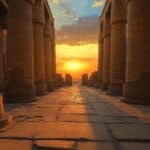
Turin King list
Combining both the mythical and historical sections, the Turin Royal Canon could be interpreted to cover a span of over 15,000 years
Theory that the Ark of the Covenant and the Great Pyramid of Giza played a role in the environmental and societal changes in ancient Egypt.
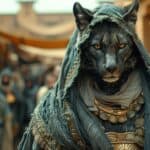
Anubis
Inpu is the original Egyptian name for Anubis, meaning “to decay” or “to putrefy,” which aligns with his association with mummification and the afterlife.
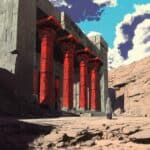
Our Hidden Connections to Atlantis, Lemuria & Beyond
The Gnostic teachings and direct experiences of individuals, especially Samael Aun Weor, who encountered ancient civilizations and humanities.
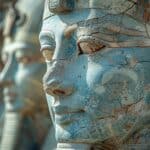
The first man Hephestus
The first man, in the opinion of the Egyptians, was Hephestus, (afterwards the god Phtha,) who is also celebrated among them as the inventor of fire.

86 Chaldean Kings – 34,080 years
The First Dynasty consists of 86 Chaldean kings who reigned for a total of 34,080 years.

Nile sediment layers dated back approximately 13,500 years
Horner’s findings suggested that fragments of pottery found in Nile sediment layers dated back approximately 13,500 years.

Menes – Adam
The first Pharaoh of Egypt, traditionally considered to have ruled around 3000 BCE. Randolph proposes that Menes ruled around 6000 years ago.
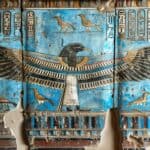
Ancient Egypt: 144,000 Souls
The convergence of timelines from Egypt is connected to the current 5D shift and the Age of Aquarius.
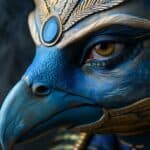
Egypt: Ra manifest in many forms
The practitioner confirms that Ra, or similar entities, could manifest in various forms, including avian.
